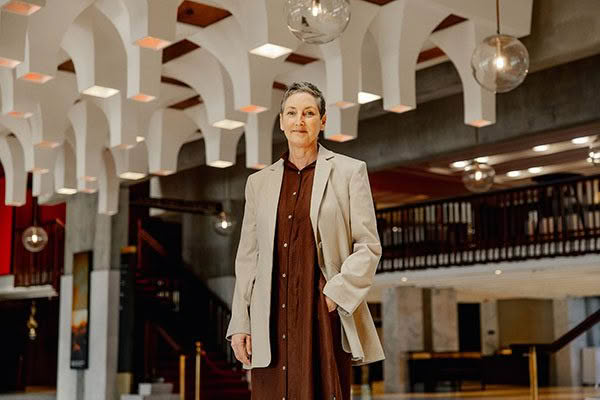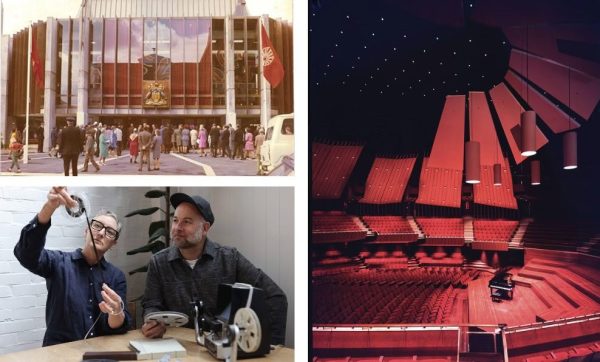The Art of Storytelling
As film producer Jane Mahoney reflects on her life, there is one clear theme running through it – the art of storytelling. The visual collection of imagery to cohesively tell a story; to emote a reaction and create connection. Something she has achieved, without doubt, in her most recent and most personal undertaking. Words Lucinda Diack, Photos Kelly Shakespeare.

Having founded Christchurch’s first independent casting agency in 1989, before going on to establish Bannan Films with then-husband Peter Bannan, Jane Mahoney has forged enviable experience over the last 35 years, undertaking a 360-degree view of the film and advertising industry. She has clocked up experience as a TV commercial producer, advertising agency producer, documentary director and marketing and communications advisor. ‘My career in this field began shooting knitting patterns in our Christchurch studio and grew to producing television commercials for some of the biggest agencies in New Zealand and Asia – including campaigns for Moccona, Estée Lauder and Sony.’
For Jane, the key to creating great work is understanding the importance of every aspect of the production in telling the story, not just the spoken dialogue. ‘In film, every element of the frame contributes to the story we are telling – the cinematography, casting choices, the location, set and art department.’
When it comes to editing, Jane reflects that it can sometimes be a brutal decision-making process. The focus has to be on what contributes to the story and drives it forward. Sometimes this means letting go of ‘favourite’ footage, or even whole scenes. She recalls going to great lengths to obtain permits to film a helicopter in central Sydney for a TV commercial, and half a day with a full crew to shoot it, only for the scene not to make it into the final cut. ‘Sometimes it’s such a hard call to make but finally it all comes down to, is it enhancing the story?’
In 2006, Jane stepped away from production, spending time working as an event manager and in an advertising agency before accepting a role in the Communications and Marketing team at the Canterbury Earthquake Recovery Authority (CERA), building on her experience in production. ‘I was involved in some really interesting projects during this time, documenting various recovery initiatives in the region. It was through this work that I first got to meet local filmmaker Rick Harvie,’ she says. ‘We collaborated on a TV documentary Resume Play, which was created to coincide with the 2015 Cricket World Cup, telling the Christchurch rebuild story through a cricket lens.’ It was sold to all international channels broadcasting the Cup and ended up being screened over 900 times in 134 different countries.
‘I have come to realise that everyone has a memory of the Town Hall,’ says Jane. ‘Whether it was school balls, conferences, graduations, choir performances … it had served as a performance and function venue for everything, from The Wiggles to the Ramones and everything in between. It is a building of international significance and had to be saved.’
Following her time at CERA, Jane returned to casting, founding the independent casting company Splendid Casting. Over the past six years she has worked on a range of commercials, films and TV dramas, including casting the feature film Head South, which was filmed in Christchurch in 2022. It’s a part of the creative filmmaking process that she loves – ‘technology has certainly streamlined the casting process! It’s come a long way since the VHS tapes and Polaroid mug shots of the eighties,’ she laughs.
It was through her meeting with director Rick Harvie in the CERA days that the seeds for their collaborative feature film Maurice and I were sown. ‘Rick had made a passing comment that he had always wanted to make a documentary about the Christchurch Town Hall. At the time, the building’s fate was unknown, and we talked a lot about the significance of the building in terms of its design; its acoustics and how everyone has a memory or a connection to the Town Hall.’
For Jane, the Christchurch Town Hall had a very personal significance, her father Maurice Mahoney having been one half of the most enduring architectural partnerships in New Zealand, Warren and Mahoney. Often described as the quieter of the two, like his daughter, Maurice possessed a quiet sense of grace and poise that demanded respect, and was regarded by many as the ‘nuts and bolts’ of the operation, often shying away from the spotlight.
‘Miles [Warren] and Maurice’s innovative, brutalist designs redefined Christchurch in the 1960s and seventies,’ explains Jane. ‘And their built legacy was all but destroyed in the 2011 earthquakes.’
Among the buildings to suffer damage was that of the Town Hall, regarded by many, including the architects themselves, as their finest work. Renowned for its elegant, brutalist form and sophisticated interiors, the 1972 building was internationally recognised as one of the best acoustic halls in the world.
‘When Maurice was diagnosed with pancreatic cancer and given only months to live, I thought about Rick’s Town Hall documentary idea,’ says Jane. ‘So I popped into his studio to tell him the sad news, and to let him know it was now or never!’ That was June 2018.

A few days later, Jane and Rick had Maurice on camera doing an interview, and an interview with Miles followed. Watching the two of them on screen, the love, respect and friendship they have for each other is evident right to the end. No small feat given their professional relationship began 60 years earlier in 1958.
‘We had no idea at the time what the interviews would be used for. Often documentary makers will write the “script” and slot the interviews in; in this case we did it the other way around. We had the players and the interviews, but no script. We didn’t know then if we were making a short film, a 60-minute documentary for television or what it would be.’
Throw Covid in the mix, and it was several years before the project came to fruition. Jane’s Covid project was starting a new business, a garden-share platform called Secret Gardens, which developed into a book she co-wrote with her daughter Sophie Bannan. ‘I vividly remember the day, 11 June 2023, that I submitted the final manuscript of Secret Gardens of Aotearoa to publishers Allen & Unwin,’ she says. ‘I rang Rick and said, “Let’s finish it.”’
It turned out to be a feature-length documentary film – Maurice and I – exploring not only the powerful role Miles and Warren have played in New Zealand architecture, but the role of decision making in the wake of a disaster.
Whether the Town Hall should be repaired at considerable expense, or if the city would be better served by a new facility built from scratch, was one of the multitude of decisions that had to be made in the months and years following the earthquakes; and as its fate hung in the balance, Miles and Maurice joined forces with a small but vocal group to lobby the Christchurch City Council to save and fully restore this much-loved, internationally significant building.
‘We had the interview footage of Miles and Maurice, a fantastic resource of archival material, including raw footage from the council meetings during the decision-making period, and a fabulous team – Editor Richard Lord and Cinematographer Mike Kelland. It was full steam ahead.’
Watching the film, it is hard to believe there was no preconceived outline or script as to how this emotive and beautiful film should have come together. It is testament to the storytelling of those involved that it has evolved into something much larger than just the ‘saving of a building’. Instead, it is a film about loss, love, the enduring importance of architecture and questioning if there is a better way. Perhaps a highlight for many will be watching Gerry Brownlee eating humble pie.
‘In some ways it’s a very local story, but its themes are universal,’ reflects Jane.
And while it might be Jane’s most personal story yet, I get the sense it is not the end of her storytelling ‘wiggly career’. There is more to come from this graceful and humble producer, and I for one can’t wait.

